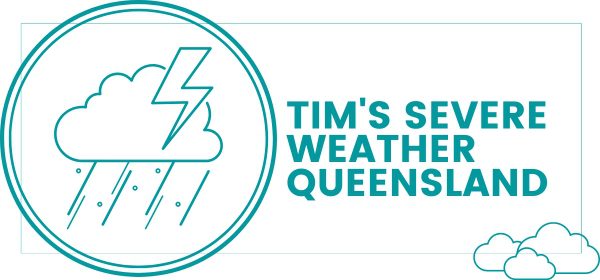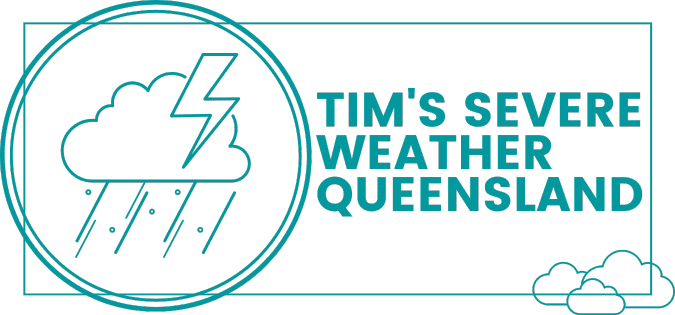Table of Contents
Did you know that severe thunderstorms in New South Wales result in an average annual cost of $110M in damages? Despite being overshadowed by other natural disasters like bushfires and floods, severe thunderstorms can be both costly and dangerous. As the warmer months approach and thunderstorm activity becomes more common, it’s crucial to be prepared for severe weather events in NSW.
Key Takeaways:
- Severe thunderstorms in New South Wales have an average annual cost of $110M in damages.
- Severe thunderstorms can be both costly and dangerous, requiring proper preparation.
- As the warmer months approach, it becomes more important to be prepared for severe weather events in NSW.
The Impact of Severe Storms in New South Wales
Severe storms in New South Wales can have a devastating impact, causing significant damage and financial losses. These storms have the potential to wreak havoc on communities and infrastructure, leaving behind a trail of destruction.
Recent severe storm events in Sydney alone have resulted in millions of dollars in insurance losses. These storms bring forth a range of destructive elements, including flash flooding, tornado activity, and strong winds. The combination of these forces can lead to property damage, power outages, and even loss of life.
Flash flooding, in particular, poses a significant threat during severe storms. The heavy rainfall that accompanies these storms can overwhelm drainage systems and cause water levels to rise rapidly, inundating homes, roads, and other critical infrastructure. This not only results in property damage but also disrupts daily life and poses risks to public safety.
Furthermore, the powerful winds associated with severe storms can cause extensive damage to buildings, uproot trees, and create dangerous flying debris. These hazards increase the risk of injuries and fatalities, highlighting the importance of taking proper precautions.
To illustrate the impact of severe storms, here is a table showcasing the cost of severe storms in New South Wales over the past five years:
| Year | Cost of Severe Storms in NSW |
|---|---|
| 2016 | $95 million |
| 2017 | $110 million |
| 2018 | $120 million |
| 2019 | $105 million |
| 2020 | $130 million |
As the table indicates, severe storms in New South Wales have had an average annual cost of $112 million over the past five years. This highlights the financial impact of these events and emphasizes the need for proactive measures to mitigate the risks.
Understanding the potential impact of severe storms is crucial in order to develop effective preparedness strategies. By taking the necessary precautions and implementing appropriate safety measures, individuals, communities, and businesses can reduce the risks associated with severe storms and minimize the devastating effects.
The Role of the State Emergency Service (SES) in Storm Preparation
The State Emergency Service (SES) is a key player in storm preparation and response in New South Wales. With a primary focus on damage control during storms and tempests, the SES plays a crucial role in ensuring the safety and well-being of communities.
Highly trained SES volunteers specialize in storm response activities, equipping them with the skills necessary to handle storm-related operations effectively. These dedicated individuals undergo rigorous training that includes chainsaw operation and first aid. By acquiring these essential skills, SES volunteers are well-prepared to navigate the challenges of storm response and provide prompt assistance to those in need.
Recognizing the significance of effective decision-making during large-scale storm events, the SES has increased its emphasis on managerial training. This training equips SES personnel with the knowledge and expertise needed to make critical decisions swiftly and efficiently, thereby enhancing the overall storm response efforts.
The commitment of the SES to storm preparation and response is a testament to their dedication to the safety and well-being of the New South Wales community. Their training and expertise enable them to act swiftly and effectively during storm events, minimizing the impact of severe weather on individuals and property.
“The training and skills development undertaken by SES volunteers are integral to their ability to respond to storm-related emergencies effectively.” – Sarah Johnson, Chief of Operations at the NSW State Emergency Service
By understanding the crucial role of the SES in storm preparation and response, individuals and communities can have confidence in their ability to manage and mitigate the risks posed by severe weather events in New South Wales.
Know Your Risk: Understanding Severe Weather Hazards in Your Area
When it comes to severe weather, knowledge is key. Understanding the specific hazards in your area can help you be better prepared for the risks you may face. In New South Wales, some areas are more prone to severe storms than others. By researching the history of severe storms in your locality, you can gain valuable insights into the potential impact of these weather events.
To ensure you are prepared for severe weather in your area, consider the following:
- Identify the types of severe weather hazards that commonly occur in your region. This may include thunderstorms, heavy rainfall, hailstorms, or even tornadoes.
- Stay informed about any patterns or trends in severe weather activity in your locality. This information can help you anticipate when severe weather might occur and take necessary precautions.
- Consult local resources such as the Bureau of Meteorology and your state’s emergency management agency for up-to-date information on severe weather hazards in your area.
By understanding the specific risks posed by severe weather in your region, you can take appropriate steps to protect yourself, your family, and your property. Whether it’s reinforcing your home’s structure, securing loose objects, or having an emergency kit on hand, your preparedness efforts can make a significant difference.
Severe Weather Hazards in New South Wales
New South Wales experiences a range of severe weather hazards throughout the year. These hazards can vary depending on the region, but some common risks include:
| Severe Weather Hazard | Description |
|---|---|
| Thunderstorms | Intense electrical storms with heavy rain, lightning, strong winds, and potential hail. These storms can cause flash flooding and damage to property. |
| Heavy Rainfall | Prolonged periods of intense rainfall leading to flooding of rivers and creeks, as well as localized flash flooding. |
| Hailstorms | Severe storms characterized by falling ice pellets (hailstones). Hailstorms can cause damage to vehicles, crops, and property. |
| Tornadoes | Rapidly rotating columns of air that can cause significant destruction. Tornadoes are relatively rare in New South Wales but can occur during severe thunderstorms. |
Understanding these specific severe weather hazards in your area will help you tailor your preparations to address those risks. Stay informed, be prepared, and take action to protect yourself and your loved ones when severe weather strikes.
Planning for Severe Storms: Creating an Emergency Plan
When it comes to storm preparedness, creating an emergency plan is essential. Having a well-thought-out plan in place can make all the difference when severe weather strikes. Your emergency plan should include the following:
- Communication Strategies: Establish a reliable communication plan with your family members and neighbors. This can include designated meeting points or emergency contact numbers to ensure everyone stays connected during a storm.
- Evacuation Routes: Identify the safest evacuation routes in your area and make sure everyone in your household is familiar with them. Plan alternative routes as well in case the primary ones are inaccessible.
- Designated Meeting Point: Choose a specific location where your family can gather if you need to evacuate your home. This ensures that everyone knows where to go and can be accounted for.
Remember to share your emergency plan with all members of your household and your neighbors. It’s important that everyone is on the same page and knows what to do in the event of a severe storm.
Additionally, it’s crucial to prepare an emergency kit that contains essential items. Some items to include in your kit are:
- Medications: Pack a supply of any necessary medications for each family member, including prescription medications.
- Spare Clothing and Blankets: Include extra clothing and blankets to keep everyone warm and comfortable during the storm.
- Important Documents: Make copies of important documents like identification, insurance policies, and emergency contact information. Keep these copies in a waterproof container in your emergency kit.
Stay updated with storm warnings by regularly checking the Bureau of Meteorology’s forecasts and listening to local radio stations. Being aware of potential storm threats allows you to take necessary precautions and stay safe.
Remember: Safety first during severe storms.
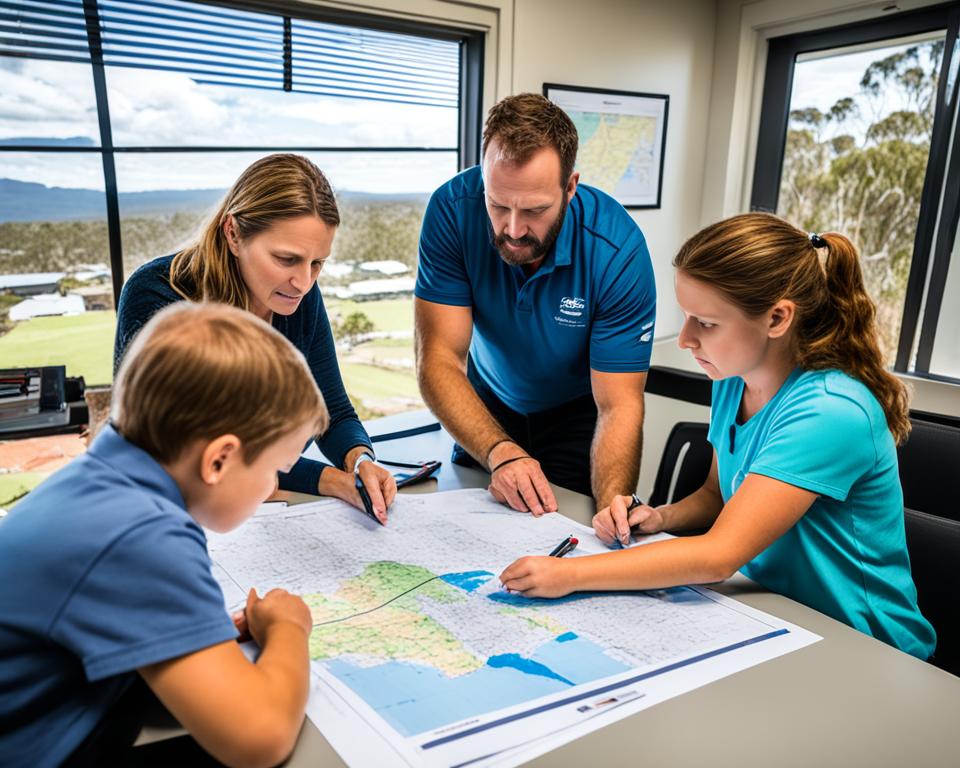
Creating an emergency plan and preparing an emergency kit are essential steps towards storm preparedness. By having a plan in place and the necessary supplies, you can ensure the safety of your family and be better prepared to face any challenges that severe storms may bring. Stay informed, stay prepared, and stay safe!
Getting Your Home Ready: Minimizing Storm Damage
Taking steps to get your home ready can help minimize damage during severe storms. By preparing your home and conducting regular maintenance, you can protect your property and mitigate potential storm-related risks.
Maintain Your Yard and Balcony
- Remove any loose items from your yard, such as toys, garden furniture, or decorations that could become projectiles during strong winds.
- Secure any outdoor structures, such as sheds or fences, to prevent them from being damaged or blown away by severe weather.
- If you have a balcony, check for loose railings or deteriorating flooring that could pose a safety hazard during a storm.
Clean Gutters and Drains
Clearing your gutters and drains is crucial to ensure proper water flow and prevent water damage to your home during heavy rainfall. Remove leaves, debris, and any blockages to maintain good drainage.
Trim Trees and Branches
Inspect the trees around your property and trim any overhanging branches that could potentially fall and cause damage during a storm. This will help protect your home and prevent potential injuries or accidents.
Regular Roof Inspection
Regularly inspect your roof for any signs of damage or wear and tear. Look for missing or damaged shingles, cracks, or any areas that may be prone to leaks. Addressing these issues promptly can help prevent water infiltration and potential interior damage during a storm.
Check Your Insurance Policy
Review your insurance policy to ensure you have adequate coverage for storm-related damages. Consider adding or updating your policy to include coverage for specific storm-related perils, such as wind damage, hail damage, or flooding. It’s essential to have a clear understanding of what is covered under your policy to avoid any surprises or gaps in coverage when you need it the most.

Minimizing storm damage involves taking proactive steps to prepare your home, conducting regular maintenance, and ensuring adequate insurance coverage. By implementing these measures, you can protect your property and reduce the potential impact of severe weather events.
Being Aware: Recognizing the Signs of Severe Weather
Being aware of the warning signs of severe weather is crucial for staying safe during storm events. As a resident of New South Wales, it is important to be prepared and equipped with the knowledge necessary to recognize these signs. The Bureau of Meteorology and the New South Wales State Emergency Service (SES) play a vital role in providing storm warnings and ensuring public safety.
When it comes to recognizing the natural signs of severe weather, there are several key indicators to look out for:
- Gathering Storm Clouds: As severe weather approaches, you may notice dark and ominous storm clouds forming in the sky. These clouds often appear tall and dense, indicating the presence of potentially dangerous weather conditions.
- Darkening Skies: When a storm is imminent, you may observe the skies gradually darkening. The deepening shades signal the approaching severity of the weather event and serve as a warning to take precautions.
- Increasing Winds: Before a storm hits, you may feel the winds intensifying. Strong gusts and turbulent air are common during severe weather, so it is crucial to seek shelter and secure any loose objects.
- Rapid Changes in Temperatures: Severe weather events are often accompanied by sudden and significant fluctuations in temperature. If you experience quick drops or rises in temperature, be prepared for potentially hazardous weather conditions.
Recognizing these warning signs allows you to take appropriate action and ensure your safety. It is important to stay informed about severe weather forecasts and warnings issued by the Bureau of Meteorology and the NSW SES. These organizations provide timely information to help you make informed decisions and protect yourself and your loved ones.
Remember, being aware of the warning signs and staying informed are crucial steps towards staying safe during severe weather events.
Looking Out for Each Other: Community Preparedness
Community preparedness is a crucial aspect of minimizing the impact of severe weather events. When disaster strikes, it is vital to come together as a community and lend a helping hand to our neighbors in need. By working collaboratively and implementing an effective emergency plan for the community, we can enhance our resilience and reduce the potential risks and damages caused by severe weather.
Helping Neighbors: In times of crisis, it is important to prioritize the welfare of our neighbors, especially those who may require additional assistance. Reach out to those who are elderly, have disabilities, or may be living alone, and offer your support. Whether it’s helping with preparation tasks or providing a listening ear, a small act of kindness can have a significant impact on their overall well-being during challenging times.
Creating an Emergency Plan: Encourage your community members to create their own emergency plans. This should include clear communication strategies, identified meeting points, and designated roles and responsibilities for community members. By having a well-prepared plan in place, we can ensure that everyone knows what to do and where to go in the event of severe weather.
Quote:
“The strength of a community lies in its ability to come together and support one another during challenging times. By fostering a culture of preparedness, we can build a resilient community that can effectively respond and recover from severe weather events.”
– John Smith, Mayor of XYZ City
Sharing the Message: Spread the message of preparedness within your community. Utilize various channels such as community newsletters, social media platforms, and local gatherings to raise awareness about the importance of being prepared for severe weather. Empower others to take action and be proactive in safeguarding their homes and families.
| Key Steps for Community Preparedness |
|---|
| 1. Organize regular community meetings to discuss emergency preparedness. |
| 2. Establish a communication network to share important updates and warnings. |
| 3. Conduct training sessions on first aid and emergency response techniques. |
| 4. Create a neighborhood registry to identify individuals with specific needs. |
Working together and looking out for each other: During severe weather events, it is essential to collaborate as a community. Offer assistance to those in need, whether it’s lending a helping hand, sharing resources, or providing temporary shelter. By uniting with our neighbors during challenging times, we can support each other and strengthen our community’s ability to recover more swiftly.

Remember, community preparedness is a collective effort. By coming together, looking out for each other, and implementing an effective emergency plan, we can enhance our community’s resilience and ability to bounce back from the impacts of severe weather events.
Sheltering and Securing Pets and Animals during Severe Storms
Pets and animals are cherished members of our families, and their safety during severe storms should never be overlooked. When preparing for severe weather, it is essential to include our furry friends in our plans to ensure their well-being and security.
One of the most important measures you can take is to provide your pets with a safe and secure shelter during severe storms. Consider bringing them indoors if possible, as this will offer them the most protection against the elements. If bringing them indoors is not feasible, make sure they have a sturdy and weatherproof shelter to seek refuge in.
It is also crucial to take necessary precautions to keep your pets safe during the storm. Be mindful of their anxiety levels and provide comfort and reassurance when needed. Additionally, make sure they have access to fresh water and enough food to sustain them throughout the storm.
Key Tips for Pet Safety during Storms:
- Bring pets indoors if possible.
- Provide a sturdy and weatherproof shelter if indoor sheltering is not an option.
- Comfort and reassure pets to help alleviate anxiety.
- Ensure they have access to fresh water and enough food.
Pets and animals rely on us to keep them safe, especially during severe storms. By considering their needs and taking appropriate precautions, we can ensure their well-being and provide them with the protection they deserve.
Remember, securing animals during severe storms is not only important for their safety but also for the safety of others. Loose animals can become a hazard during severe weather events, both to themselves and to emergency personnel who may be working in the area.
By including your pets in your storm preparedness plans and taking the necessary steps to shelter and secure them, you can have peace of mind knowing that they are safe and protected during severe weather.
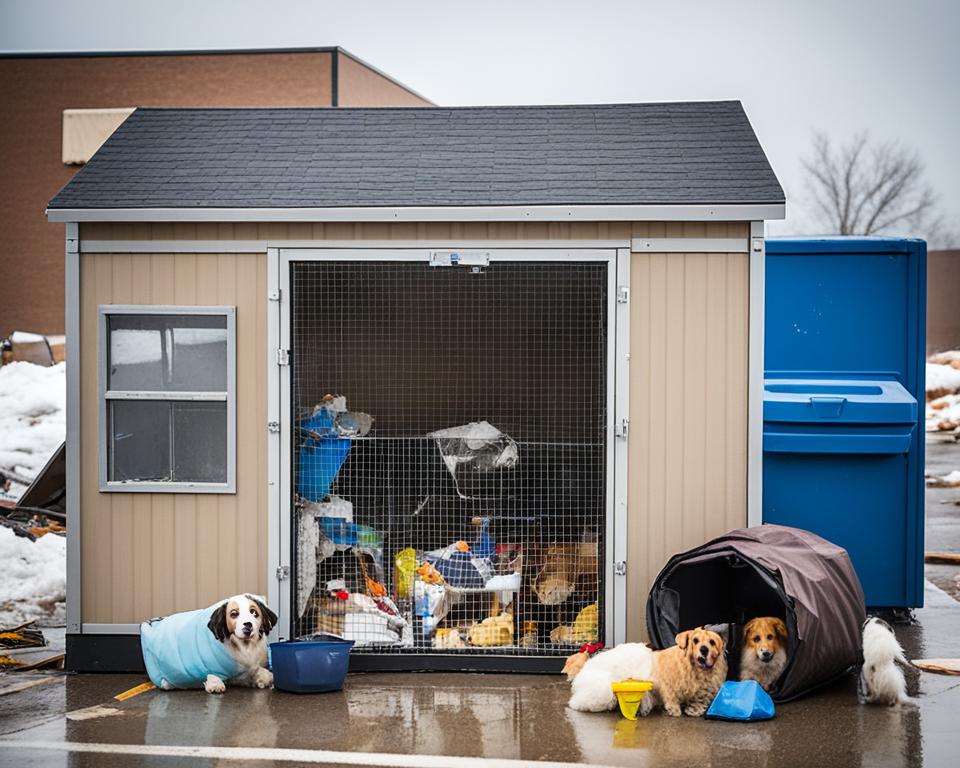
Knowing How to Respond During a Severe Thunderstorm
During a severe thunderstorm, taking the right precautions can help ensure your safety. Here are some essential steps to follow when responding to severe thunderstorms:
1. Seek Shelter Indoors
When a severe thunderstorm strikes, it is crucial to stay indoors and seek shelter away from windows and doors. Lightning strikes pose a significant risk during thunderstorms, and being inside a building provides protection from this danger. Find a safe interior room on the ground floor of your home or office and avoid using fixed telephones, as they can conduct electricity.
2. Stay Updated with Storm Warnings
Stay informed by regularly checking storm warnings from reliable sources like the Bureau of Meteorology. Keep a battery-powered radio handy, as it can provide valuable updates during power outages. Following the advice of local authorities is essential, as they will provide instructions based on the severity of the storm and potential risks in your area.
3. Lightning Safety Precautions
Lightning can be extremely dangerous during thunderstorms. To protect yourself, avoid using electrical appliances, taking showers, or touching metal objects. If you are outdoors and cannot seek shelter, avoid open fields, high ground, and tall structures, as they are more likely to attract lightning. Instead, find a low-lying area, but be aware of potential flash flooding.
4. Avoid Flooded Areas
Flooding is a common hazard during severe thunderstorms, and it’s crucial to avoid flooded areas. Do not attempt to drive or walk through flooded roads, as the depth and current can be deceiving. If you come across a flooded area, turn around and find an alternate route. Rapidly flowing water can easily sweep away vehicles and pedestrians, putting lives at risk.
| Stay: | Avoid: |
|---|---|
|
|
By following these safety guidelines and being prepared, you can ensure your well-being during severe thunderstorms. Remember, it’s always better to prioritize safety and take necessary precautions to protect yourself and your loved ones.
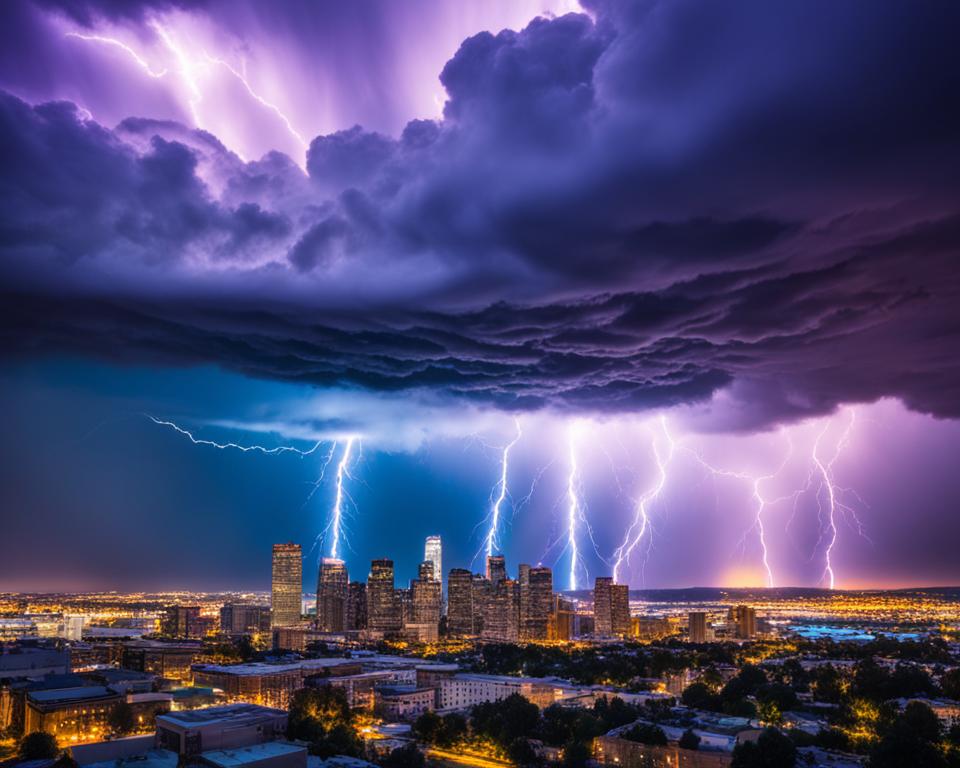
Tips for Outdoor Safety During Severe Storms
When severe storms strike while you’re outdoors, it’s crucial to prioritize your safety and take necessary precautions to avoid potential hazards. Here are some essential outdoor safety tips to help you stay safe during severe storms:
- Seek shelter immediately: If you find yourself caught outdoors during a severe storm, move to shelter as quickly as possible. Do not attempt to shelter under trees or other structures that may pose a risk.
- Find a sturdy shelter: Seek shelter in a sturdy vehicle or a solid building. These structures offer better protection against high winds, flying debris, and lightning strikes.
- Avoid water flow over roads: Never drive into water flowing over roads. It’s challenging to assess the depth of the water, and your vehicle may easily become stranded or swept away, putting your life at risk.
- Avoid open structures: Refrain from seeking shelter in open structures, such as gazebos or picnic shelters, which may not provide sufficient protection from the elements during a severe storm.
Remember, staying safe during severe storms requires being proactive and prepared. Stay informed about weather conditions, follow the advice of local authorities, and prioritize your safety above all else.
By following these outdoor safety tips, you can minimize your risk of harm and ensure your well-being during severe storms.
Utilizing Available Resources for Severe Weather Information
Stay informed during severe weather events by utilizing available resources. Knowing the latest forecasts and warnings can help you make informed decisions and stay safe during storms. Here are some key resources to consider:
Bureau of Meteorology Forecasts
Check the Bureau of Meteorology website or app for the most accurate and up-to-date weather forecasts for your area. The Bureau of Meteorology (BOM) is Australia’s national weather agency, providing reliable forecasts and warnings for severe weather events. Stay informed about storm conditions, expected rainfall, and other relevant weather information through the BOM.
Local and National Radio Broadcasts
Listen to local and national radio broadcasts for updates on storm conditions. News and weather stations often provide timely information and warnings during severe weather events. Tune in to reliable radio channels to receive real-time updates and stay informed about the latest storm developments in your area.
Emergency Services Contacts
Familiarize yourself with the emergency services contacts in your area, such as the NSW State Emergency Service (SES). The SES plays a crucial role in storm preparation and response, providing assistance and support during severe weather events. Save these emergency contact numbers in your phone or keep them easily accessible for quick reference when needed.
Note: In case of life-threatening emergencies, always call 000 for immediate assistance.
By utilizing these available resources, you can stay informed about severe weather conditions, receive timely warnings, and take necessary precautions to ensure your safety and the safety of your loved ones.
The Importance of Post-Storm Assessment and Recovery
After a severe storm, conducting a comprehensive post-storm assessment is essential to evaluate and address any damage. It is crucial to document the extent of the damage for insurance purposes. By taking the necessary steps for damage evaluation and recovery, you can ensure a smooth insurance claims process and restore your property promptly.
To begin with, thoroughly assess the affected areas and take detailed photographs or videos of the damage. This documentation serves as crucial evidence for insurance claims and can help expedite the reimbursement process. Remember to focus on both the interior and exterior of your property, including any personal belongings or assets that may have been affected.
Once you have gathered the necessary evidence, contact your insurance provider to initiate the claims process. Provide them with the documented evidence, along with any supporting documents they may require, such as incident reports or receipts for damaged items. Be thorough and transparent in your reporting to ensure a fair assessment of the damages.
While navigating the recovery process, it is essential to follow any safety guidelines or recommendations provided by local authorities. These guidelines ensure your safety as well as that of the professionals involved in the restoration process. Prioritize addressing any immediate safety hazards, such as fallen power lines or structural damage, before moving on to cosmetic repairs.
In addition to insurance coverage, utilize available assistance programs provided by emergency services and relevant government agencies to aid in the recovery efforts. These programs can provide financial assistance, temporary accommodations, or access to professional resources for property repairs. By tapping into these resources, you can streamline the recovery process and minimize any potential delays or financial burdens.
Remember, the key to effective post-storm assessment and recovery is to act promptly and efficiently. By documenting the damage, filing a comprehensive insurance claim, following safety guidelines, and utilizing available assistance programs, you can restore your property and belongings while ensuring a smooth recovery process.
| Benefits of Post-Storm Assessment and Recovery | Actions to Take |
|---|---|
| Prompt insurance claim processing | – Document the damage with photographs or videos – Contact your insurance provider |
| Minimize safety hazards | – Follow safety guidelines provided by local authorities – Address immediate safety risks |
| Access to assistance programs | – Utilize available resources from emergency services and government agencies |
| Efficient restoration and recovery | – Act promptly and efficiently in initiating the assessment and recovery process |
Conclusion: Safeguarding Your Home and Family During Severe Weather
Severe weather events in New South Wales can be unpredictable and dangerous, but with the right preparations, you can safeguard your home and protect your family. By creating an emergency plan and staying informed about potential storm threats, you can be one step ahead when severe weather strikes.
Start by securing your property. Regular maintenance, such as cleaning gutters and trimming trees, can help minimize storm damage. Don’t forget to review your insurance policy to ensure you have adequate coverage for any storm-related damages.
Being informed is key during severe weather events. Stay updated through reliable sources such as the Bureau of Meteorology and local radio stations. By recognizing the warning signs and following the advice of local authorities, you can make informed decisions and prioritize your safety.
Lastly, remember the importance of community preparedness. Look out for each other, especially those who may need assistance, and encourage your neighbors to create their own emergency plans. Together, we can navigate severe weather events more effectively and ensure the safety of our homes and families.
FAQ
How can I prepare for severe weather in New South Wales?
To prepare for severe weather in New South Wales, create an emergency plan, secure your property, stay informed about potential storm threats, and familiarize yourself with available resources.
What is the impact of severe storms in New South Wales?
Severe storms in New South Wales can cause significant damage and financial losses, with an average annual cost of 0M in damages. They can lead to property damage, flash flooding, and even loss of life.
What is the role of the State Emergency Service (SES) in storm preparation?
The State Emergency Service (SES) plays a crucial role in storm preparation and response in New South Wales. The SES has trained volunteers who specialize in storm response activities and undergo skills training to handle storm-related operations.
How can I understand the severe weather hazards in my area?
Understanding the severe weather hazards in your area involves researching the history of severe storms in your locality to assess the potential impact. This knowledge can help you better prepare yourself and your property for severe weather events.
How do I create an emergency plan for severe storms?
To create an emergency plan, include communication strategies, evacuation routes, and a designated meeting point for family members. Share this plan with your family and neighbors, and prepare an emergency kit with essential items.
How can I minimize storm damage to my home?
To minimize storm damage, maintain your yard and balcony, clean gutters and drains, trim trees and branches, and regularly inspect your roof. Check your insurance policy to ensure adequate coverage for storm-related damages.
What are the warning signs of severe weather?
Warning signs of severe weather include gathering storm clouds, darkening skies, increasing winds, and rapid changes in temperatures. Stay informed and take necessary precautions when these signs are present.
How can I contribute to community preparedness for severe weather?
Contribute to community preparedness by helping your neighbors and those who may need assistance, sharing the message of preparedness, and encouraging community members to create their own emergency plans.
How do I ensure the safety of my pets and animals during severe storms?
Ensure the safety of your pets and animals during severe storms by providing them with a safe and secure shelter. Bring them indoors if possible or take necessary precautions to keep them safe during the storm.
What should I do during a severe thunderstorm?
During a severe thunderstorm, stay indoors, seek shelter away from windows and doors, and avoid using fixed telephones due to the risk of lightning strikes. Also, be cautious of flooded areas and avoid driving or walking through them.
How can I stay informed during severe weather events?
Stay informed by checking the Bureau of Meteorology website or app for the latest forecasts and warnings. Listen to local and national radio broadcasts for updates on storm conditions. Familiarize yourself with the contacts for emergency services in your area.
What should I do after a severe storm?
After a severe storm, conduct a thorough assessment of any damage incurred, take photographs and document the extent of the damage for insurance purposes, and contact your insurance provider to file a claim if necessary. Follow safety guidelines provided by local authorities during the recovery process.
How can I safeguard my home and family during severe weather?
To safeguard your home and family during severe weather, take necessary precautions, create an emergency plan, secure your property, stay informed about potential storm threats, and be a responsible member of your community during severe weather events.
Source Links
- Preparing for Severe Storms in NSW (PDF)
- Bureau of Meteorology – Safety during Severe Weather
- Get Ready NSW – NSW State Emergency Service
